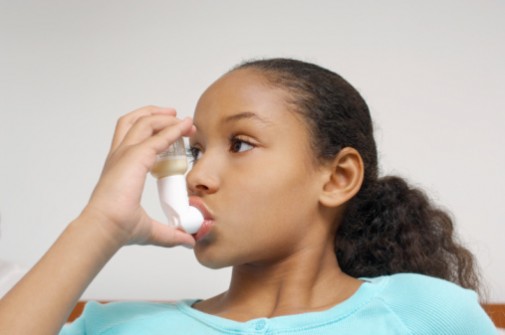Dangers of second-hand smoke for asthmatic kids

Physicians have warned for years that children with asthma are more likely to make multiple trips to the hospital if exposed to second-hand smoke at home.
According to the results of a study published in the journal Pediatrics, approximately 80 percent of children hospitalized following an asthma attack or other breathing problem were exposed to second-hand smoke, as revealed by a simple saliva test. The researchers say the testing showed much larger number of exposures than that self-reported to physicians by parents.
“The ability to measure serum and salivary cotinine levels (a marker for tobacco exposure) presents the possibility of an objective measure that can be obtained when a child is seen in the emergency department or in the hospital, and may be used to predict future hospitalizations,” says Dr. Robert Kahn, the study’s senior author and associate director of general and community pediatrics at Cincinnati Children’s Hospital in a news release. “Such a measure for exposure to tobacco smoke could be used to target specific interventions at caregivers of those children before discharge from the hospital.”
For the study, Dr. Kahn and his team of researchers looked at blood and saliva test results of more than 600 children ages one to 16. The children were tracked for a year following admission to Cincinnati Children’s Hospital after an asthma attack. They found those showing exposure to second-hand smoke were more than twice as likely to be readmitted to the hospital.
“This was a very important study, as it shows the dramatic impact of tobacco smoke exposure in exacerbating asthma and hospital readmissions in children,” says Dr. Clifton Clarke, pulmonologist at Advocate Illinois Masonic Medical Center in Chicago. “My adult patients frequently underestimate the impact second-hand smoke has on their children—even in what they may consider small amounts.”
Dr. Clarke says his main advice for parents is to help their children avoid cigarette smoke altogether. He says if you’re even close enough to smell the smoke, you’re too close.
“I wasn’t surprised by the results, but I was surprised by the magnitude,” Dr. Clarke says. “This is a wake-up call. We need to take this opportunity to educate parents on the dangers of second-hand smoke when their children are brought to the hospital with breathing difficulties.”
Related Posts
Comments
About the Author
health enews staff is a group of experienced writers from our Advocate Health Care and Aurora Health Care sites, which also includes freelance or intern writers.

















